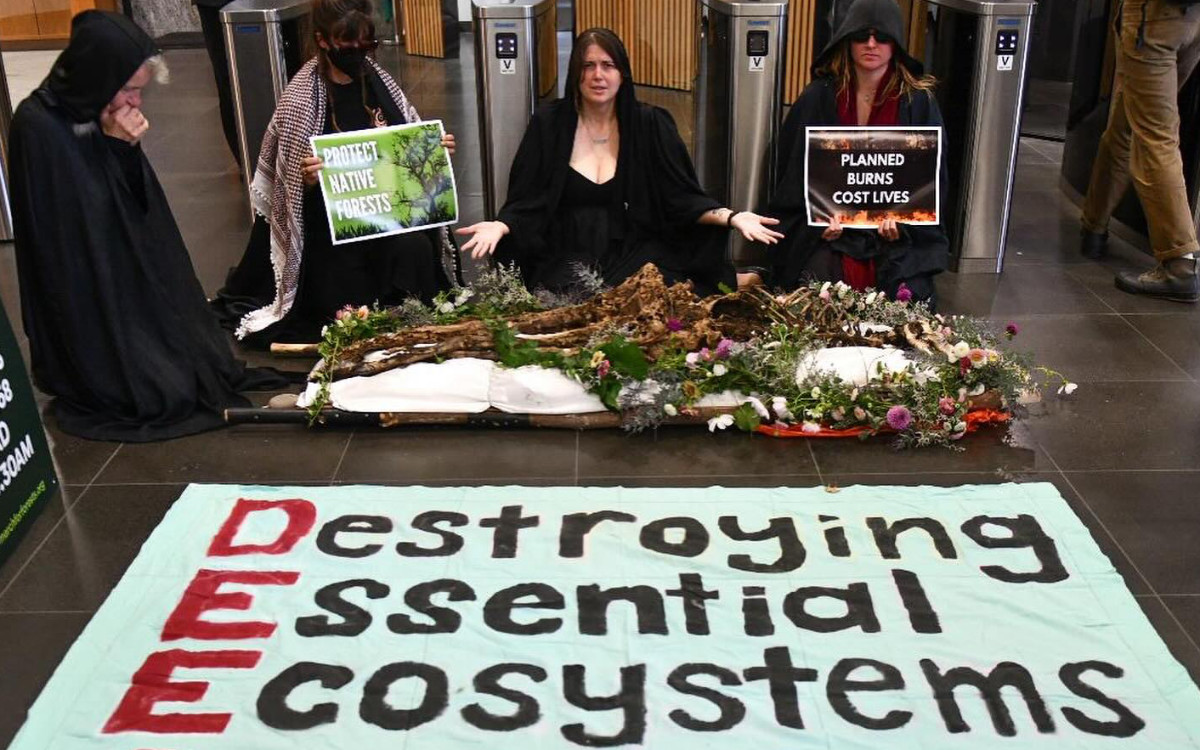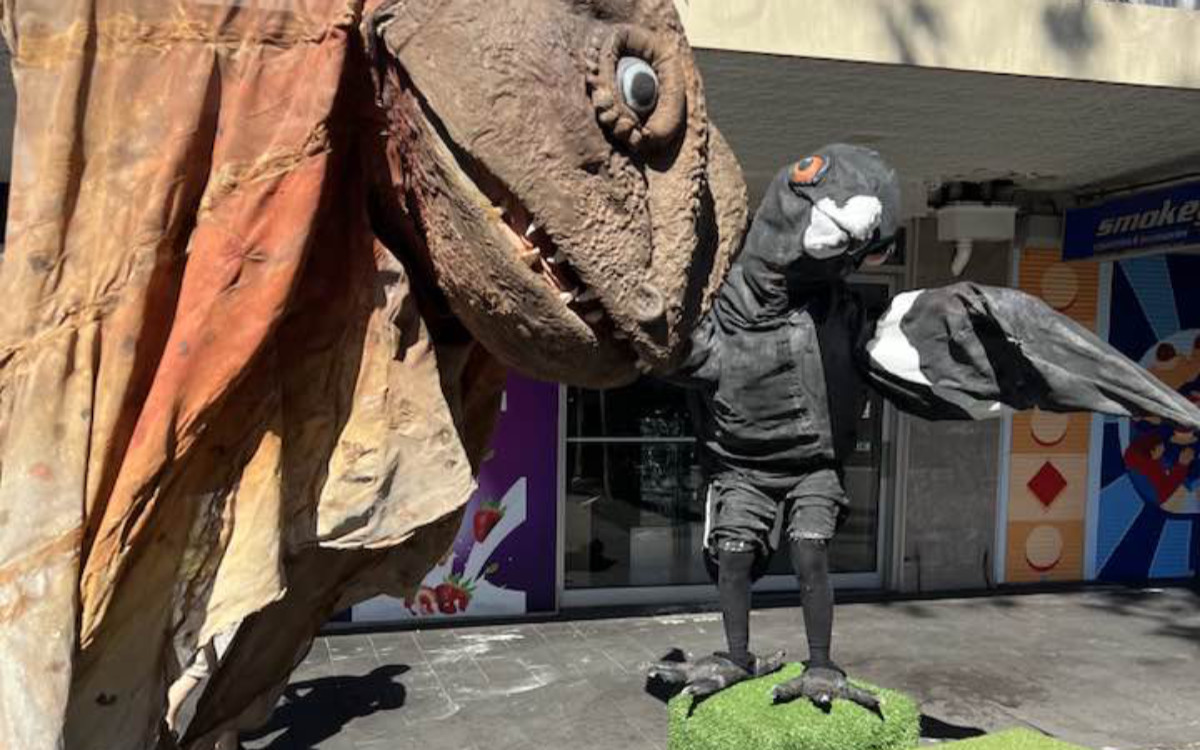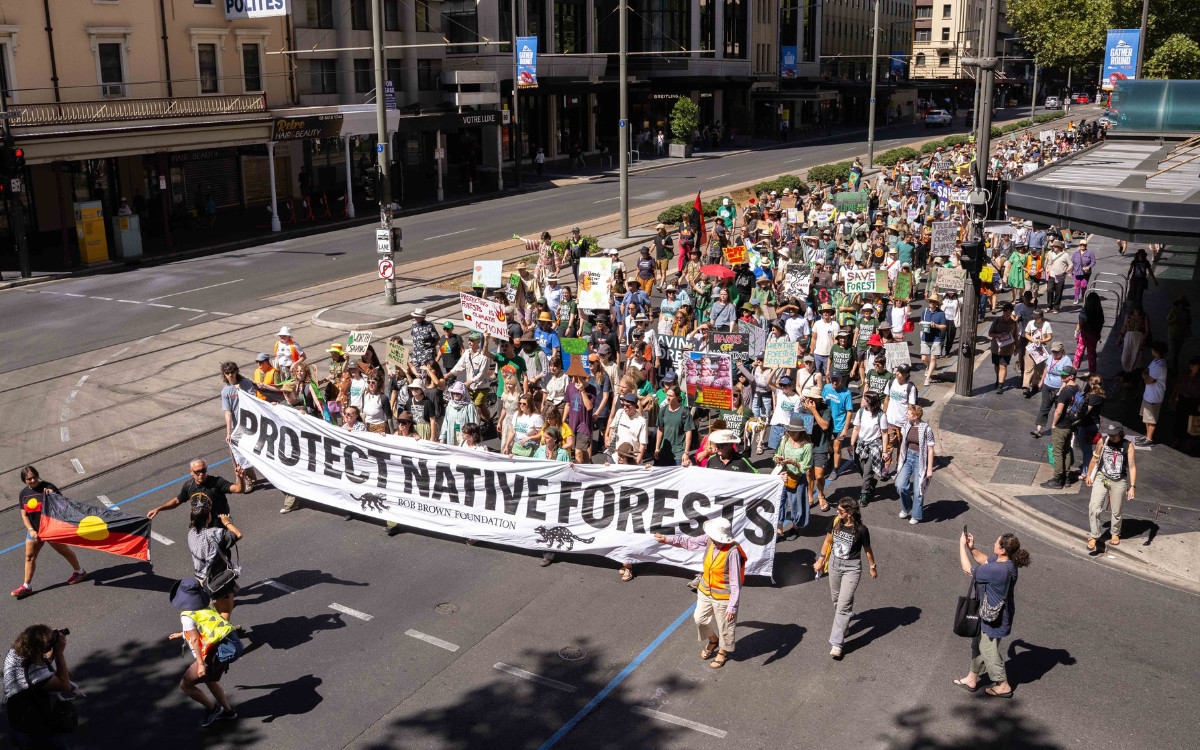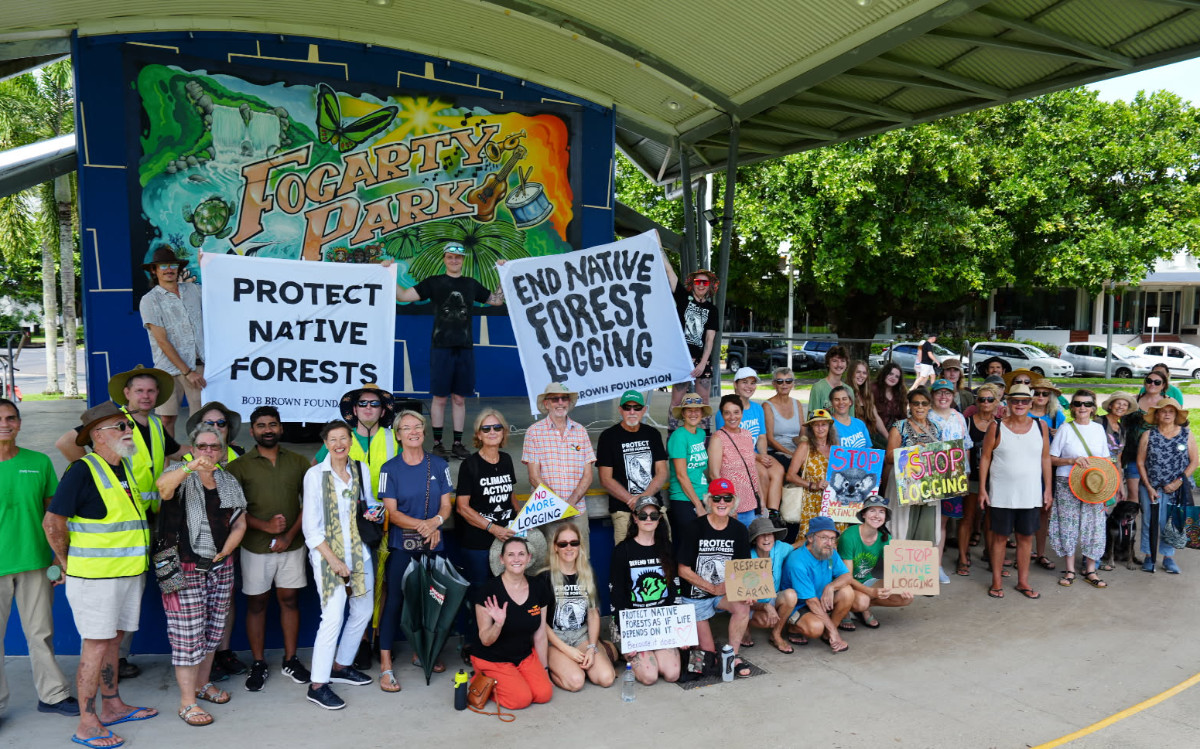
Protest in Melbourne a prelude to nationwide march for forests
Extinction Rebellion Australia, 26 Mar 2025
A burnt kangaroo delivered to Victoria’s Environment department office symbolised ongoing native forest destruction. The XRVic and community action was part of the lead-up to a national day-of-action coordinated by the Bob Brown Foundation.
Channel 9 News reported that Extinction Rebellion protesters "held a bizarre mock-funeral" to protest the mismanaged controlled burns near Mount Pleasant.
The kangaroo corpse was brought to DEECA (Dept of the Environment, Energy and Climate Change) by community members protesting the planned burns and logging activities of the government's Forest Fire Management Victoria (FFMV).
DEECA is the home of FFMV, which is increasingly under the spotlight for implementing a bushfire mitigation regime that is out of step with the latest science.
Rosemary Storey, resident of the Kinglake foothills and participant in the action, explained that the animal represented all the helpless creatures unable to escape the flames and smoke of government planned burns.
Mel Darer, Gippsland wildlife rescuer of 20 years, said: "Arboreal animals like koalas, greater gliders, and nestling birds are often trapped, unable to escape the flames, their lives ended needlessly. The pain of finding these creatures burnt to death is indescribable and their deaths are totally in vain as these planned burns only increase the flammability of forests and do not protect human lives.
"This view is supported by current science. World renowned forest ecologist Professor David Lindenmayer has said that we've understood for a long time now that logging can make bushfires worse, but it's only in the last few years that evidence is showing that prescribed burning could be doing the same thing."

Dr Phil Zylstra, fire scientist and former remote area firefighter, is clear that planned burning is not fit for purpose. She said: "Current management is to use frequent fuel reduction burning to limit the effect of large fires. What we do by frequently burning forests is set them up for a big fall with the next fire."
Yet, despite the risk of putting communities in greater danger from bushfire and the impact they have on native wildlife and forest ecosystems, the Victorian government will conduct planned burns of hundreds of thousands of hectares of forest this year at a cost of $160 million. Meanwhile work on innovative technologies in rapid detection and suppression of bushfires at ANU is stalled due to lack of funding.
Rosemary Storey said "Personally, I'd feel a lot safer if that money was spent on more helicopters, faster detection of fires and lots more very well-equipped people putting them out."

Logging has supposedly stopped in Victoria but 19 of the 21 former VicForests logging contractors have been taken on by FFMV. Logging now takes the form of storm “clean-up”, clearing along the perimeter of planned burns, or work on 6,000 kilometres of “strategic fire breaks”, a project that has also received condemnation from the community and scientists. Since the end of VicForests, the State Labor Government has failed to legislate any new National Parks and timber mills are receiving logs from Tasmania’s native forest logging. This means the logging industry could be restarted by a future state government.
On the following Sunday, over nine thousand people across Australia joined marches co-ordinated by the Bob Brown Foundation. Marches took place in Sydney, Melbourne, Hobart, Adelaide, Canberra, Cairns and across NSW in Byron Bay, Ulladulla, Bellingen, Bega, Newcastle and Armidale. Marchers called for an end to native forest logging on the eve of Prime Minister Albanese’s attack on national environment laws, in lockstep with Peter Dutton.
